Accessories That Elevate Your Outfit: From Watches to Ties
Hey there, style seekers! Let’s talk about something that can make or break your outfit: accessories. You might think they’re just small details, but trust me, they’re the secret sauce that can turn a good look into a great one. Whether you’re dressing for the office, a night out, or just want to feel put-together on a casual Sunday, the right accessories can elevate your style from zero to hero.
In this guide, we’re going to discuss men’s accessories. We’ll cover everything from classic watches to those often-overlooked tie clips. By the time you’re done reading, you’ll be armed with the knowledge to pick the perfect accessories for any occasion. So, let’s get started!
Contents
1. Watches
Let’s kick things off with the granddaddy of all accessories: the watch. A good watch does more than just tell time; it tells a story about who you are.
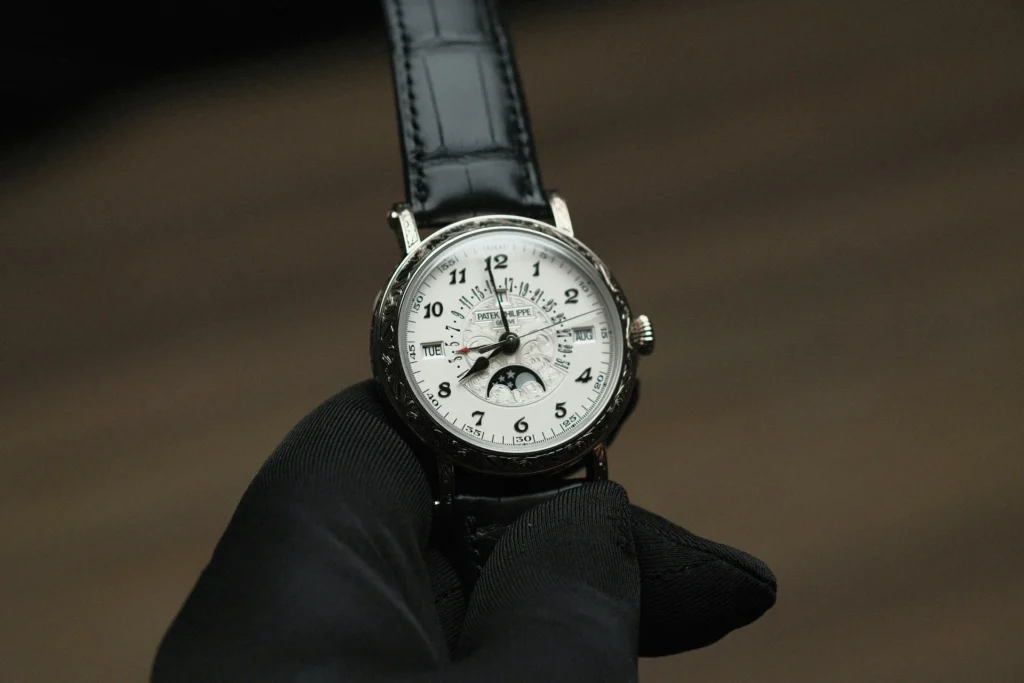
Types of Watches
First up, you’ve got dress watches. These sleek, minimalist timepieces pair perfectly with a suit or formal wear. Think thin cases, leather straps, and clean dials. Brands like Jaeger-LeCoultre and Patek Philippe are the cream of the crop here but don’t worry if those are out of your budget. There are plenty of affordable options that nail the dress watch look.
Next, we’ve got casual watches. These are your everyday workhorses. They’re versatile enough to wear with jeans and a t-shirt or business casual attire. Look for watches with metal bracelets or more rugged leather straps. Brands like Seiko, Citizen, and Bulova offer great casual watches that won’t break the bank.
Finally, there are sports watches. These bad boys are built to take a beating. They often come with features like water resistance, chronographs, and durable materials. Rolex Submariner is the classic example, but brands like Casio G-Shock offer tough-as-nails sport watches at a fraction of the price.
2. Belts
Alright, let’s move south and talk about belts. These unsung heroes do more than keep your pants up; they tie your whole look together.
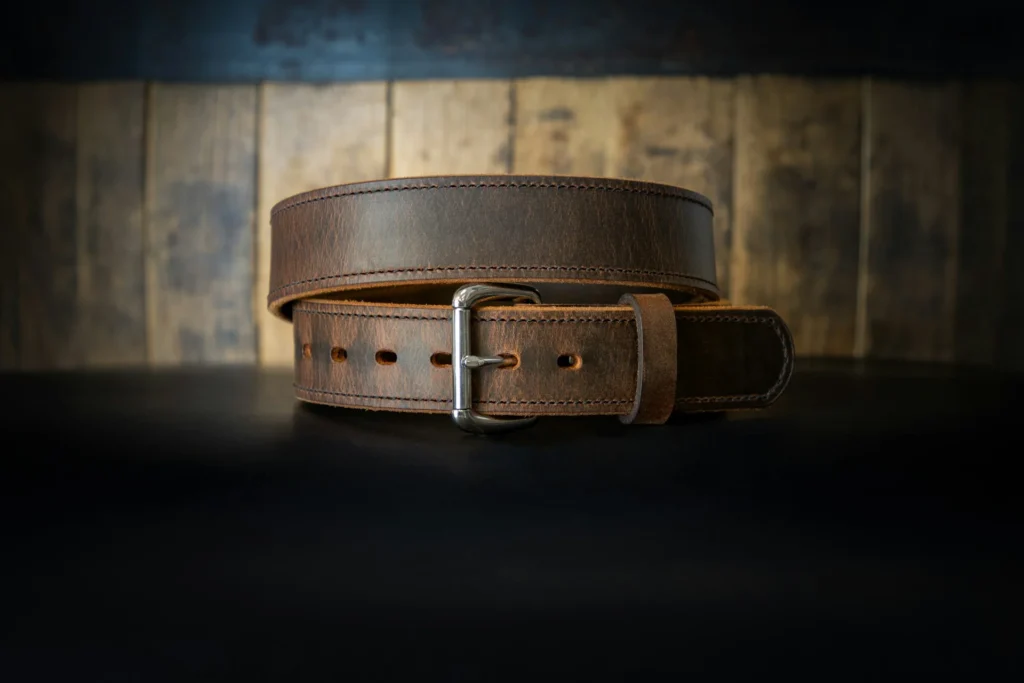
Leather vs. Fabric Belts
Leather belts are your go-to for most occasions. They’re durable, look great, and age beautifully. For formal wear, stick to smooth leather in black or brown. For casual outfits, you can play with textures like suede or braided leather.
Fabric belts, on the other hand, are perfect for casual, preppy looks. Think summer barbecues or beach outings. They come in a variety of colors and patterns, allowing you to add a pop of personality to your outfit.
Matching Belt Color and Buckle
Here’s the golden rule: match your belt to your shoes. Wearing brown shoes? Brown belt it is. Black shoes? You guessed it, black belt.
As for the buckle, it should generally match your other metal accessories. If you’re wearing a silver watch, go for a silver buckle. Gold jewelry? Opt for a gold-toned buckle.
3. Ties and Bow Ties
Now, let’s talk about the accessory that’s synonymous with dressing up: the tie. And don’t worry, we haven’t forgotten about its quirky cousin, the bow tie.
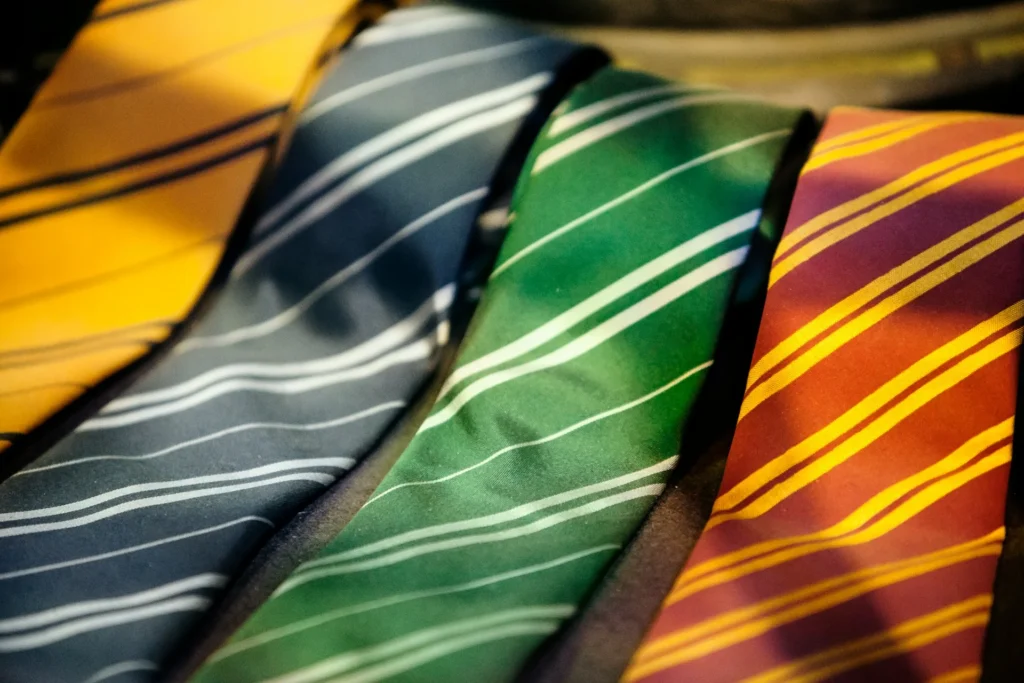
Choosing the Right Tie Width and Length
Tie width should complement your body type and the lapels of your jacket. If you’re on the slimmer side or wearing a narrow-lapeled jacket, go for a tie between 2.25 and 2.75 inches wide. Broader builds and wider lapels can handle ties up to 3.5 inches wide.
Length is crucial too. Your tie should just brush the top of your belt buckle. Any shorter and you’ll look like you’ve outgrown it; any longer and it’ll look sloppy.
Patterns and Colors
When it comes to patterns and colors, the world’s your oyster. But here are some guidelines to keep you on track:
For formal events, stick to solid colors or subtle patterns in muted shades.
In the office, you can experiment with stripes, small geometric patterns, or tasteful floral designs. For casual events, feel free to go bold with bright colors and larger patterns.
Always consider your shirt when choosing a tie. If your shirt has a pattern, go for a solid tie or one with a subtle pattern. Solid shirt? That’s your chance to rock a tie with a bolder pattern.
Bow Ties: When and How To Rock Them
Bow ties aren’t just for nerds and formal events anymore. They’re a great way to add some personality to your outfit. For formal occasions, stick to black silk. But for everyday wear, don’t be afraid to experiment with colors and patterns.
The key to pulling off a bow tie is confidence. Wear it like you mean it, and you’ll look dapper, not dorky. And please, learn to tie a real bow tie. Pre-tied ones are the clip-on ties of the bow tie world.
4. Pocket Squares
Let’s move on to the pocket square. This little piece of fabric can add a whole new dimension to your jacket or suit.
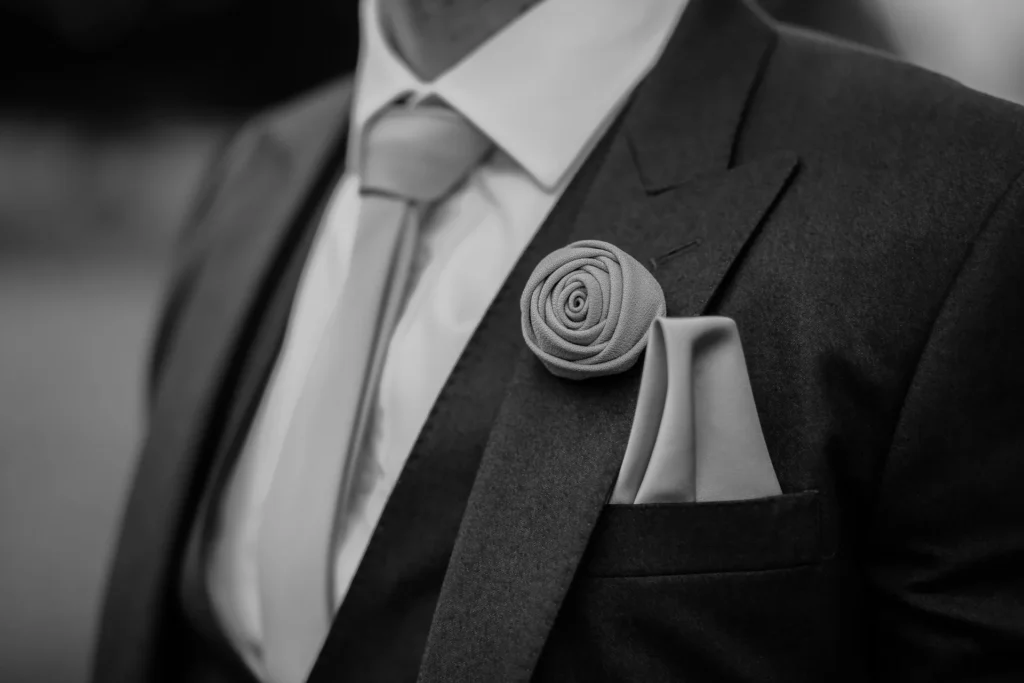
Coordinating With Ties and Shirts
The old rule of matching your pocket square exactly to your tie is outdated. Instead, aim to complement. If your tie has multiple colors, pick out a secondary color for your pocket square. Or, choose a pocket square that picks up a color from your shirt or jacket.
When To Match and When To Contrast
For formal events, a white linen pocket square with a presidential fold is always appropriate. It’s the little black dress of the pocket square world.
For less formal occasions, have fun with it. A contrasting pocket square can add a pop of color to an otherwise muted outfit. Just remember, if your tie is bold, keep your pocket square subtle, and vice versa.
5. Cufflinks and Tie Clips
Now let’s talk about some of the smaller accessories that can make a big difference: cufflinks and tie clips.
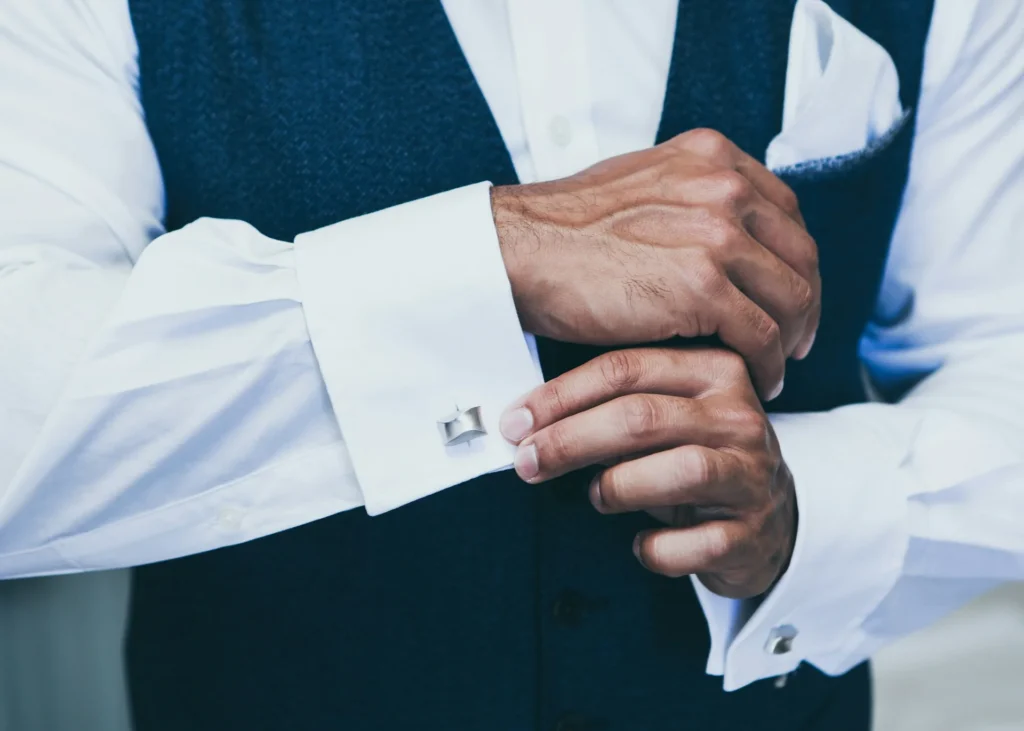
Types of Cufflinks
Cufflinks come in a variety of styles, from formal to fun. For black-tie events, stick to simple, elegant designs in precious metals. For the office, you can’t go wrong with classic knot cufflinks or simple geometric shapes.
For more casual settings, this is your chance to show some personality. Novelty cufflinks can be a great conversation starter, just make sure they’re appropriate for the occasion.
How To Wear a Tie Clip Properly
A tie clip isn’t just decorative; it’s functional. It should keep your tie in place, securing it to your shirt. Place it between the third and fourth buttons of your shirt, and never below the middle of your tie.
Width-wise, your tie clip should never be wider than your tie. A good rule of thumb is to aim for about 3/4 the width of your tie.
Choosing Materials
When it comes to materials for both cufflinks and tie clips, consider the overall look you’re going for. Silver-toned metals like sterling silver or stainless steel are versatile and work with most outfits. Gold can add a touch of luxury but be sure to match it with other gold accessories.
For a more casual look, don’t be afraid to experiment with materials like wood, fabric, or enamel. Just remember to keep the rest of your accessories in the same style family.
6. Sunglasses
Sunglasses aren’t just for blocking out the sun; they’re a style statement in their own right. Let’s break down how to choose the perfect pair.
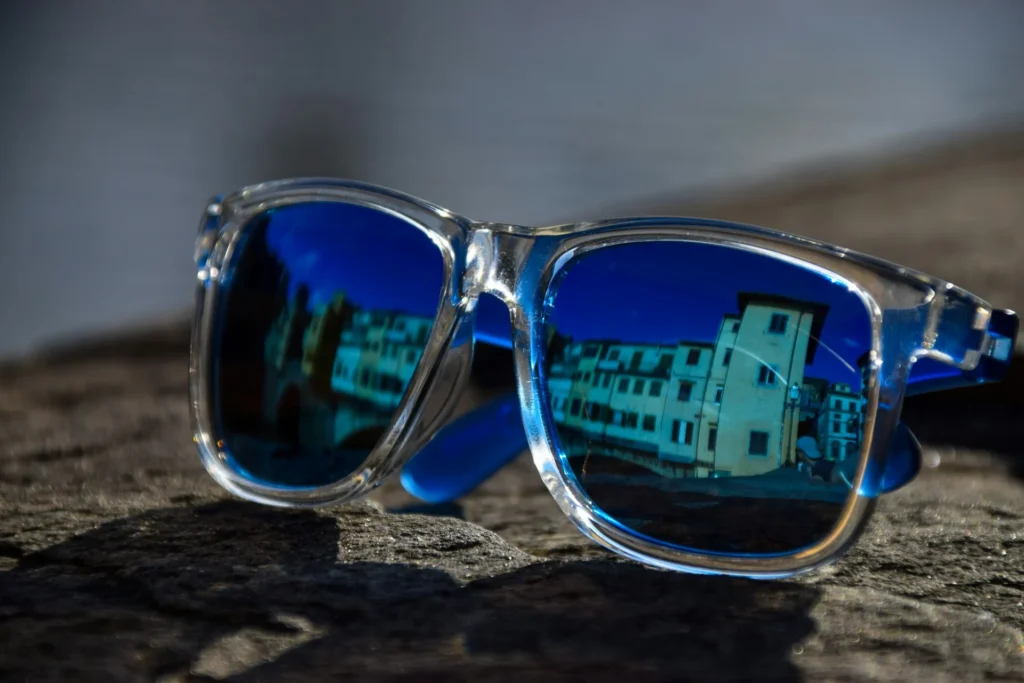
Lens Colors and Their Effects
Different lens colors do more than just look cool; they can enhance or alter your vision in various ways:
Grey lenses: Reduce brightness without altering color perception. Great for driving.
Brown lenses: Enhance contrast and depth perception. Ideal for variable light conditions.
Green lenses: Enhance contrast while maintaining color balance. Good for general use.
Yellow lenses: Enhance contrast in low-light conditions. Perfect for overcast days or winter sports.
Balancing sunglasses with other accessories
Remember, sunglasses are a statement piece. If you’re wearing bold shades, keep your other accessories subtle. Also, consider the overall vibe of your outfit. Sporty wrap-around shades might look out of place with a suit, while classic aviators can work with almost anything.
7. Bags and Briefcases: Carrying Your Essentials in Style
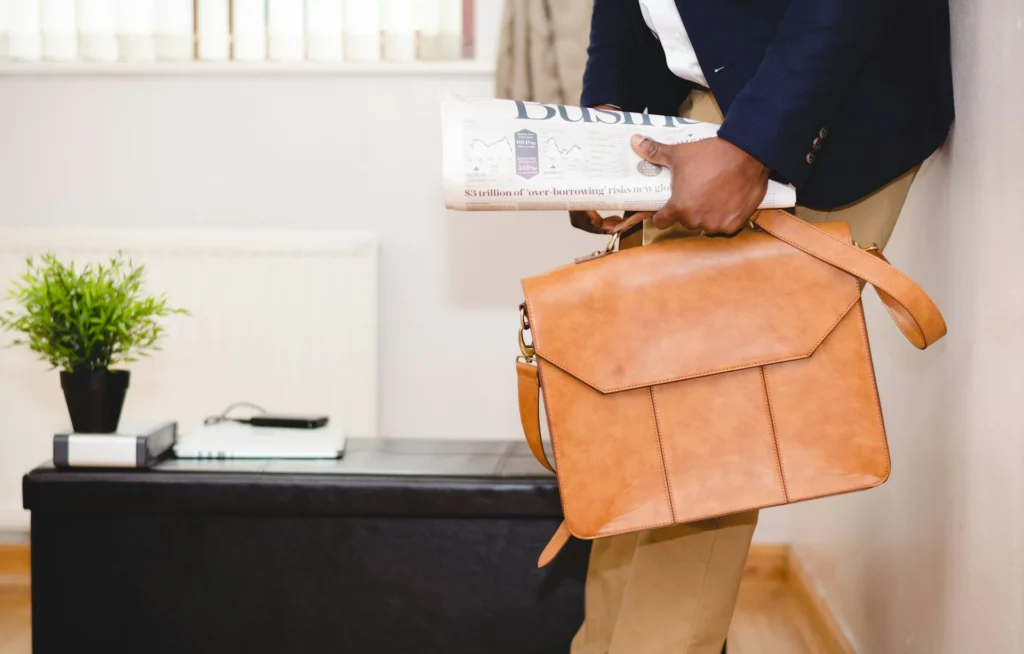
A man’s bag is more than just a place to stash his stuff; it’s an extension of his style. Let’s explore the world of men’s bags.
Types of Bags For Different Needs
For work, a sleek briefcase or a structured messenger bag is your best bet. Look for something in leather or a high-quality synthetic material that can hold your laptop and documents without looking bulky.
For everyday use, consider a backpack or a more casual messenger bag. These can hold all your daily essentials while keeping your hands free.
For travel, a weekender bag is perfect for short trips. Look for one with a separate compartment for shoes and a strap that allows for comfortable carrying.
Matching Leather Goods
When it comes to leather bags, the same rule applies to belts: try to match them to your shoes. A brown leather bag looks great with brown shoes, while a black bag pairs well with black shoes.
Features To Look For
Quality is key when it comes to bags. Look for sturdy stitching, quality zippers, and durable materials. For leather bags, full-grain leather will age beautifully and last for years.
Consider functionality too. Do you need a padded laptop compartment? Multiple pockets for the organization? Water resistance for rainy days? Think about your daily needs and choose accordingly.
FAQs
Q: How many watches should a man own?
A: Ideally, a man should have at least three watches: a dress watch for formal occasions, a casual watch for everyday wear, and a sports watch for active pursuits. However, one versatile watch that can transition between casual and slightly dressier occasions can be a good starting point.
Q: Is it okay to mix metals in accessories?
A: While traditionally it’s advised to match metals, modern style rules are more flexible. Mixing metals can create an interesting look, but it’s best to do so intentionally. For example, a two-tone watch that combines gold and silver can be a great way to tie together other mixed metal accessories.
Q: How do I know if my tie is the right length?
A: The tip of your tie should just touch the top of your belt buckle when you’re standing up straight. If it’s shorter or longer than this, it will look disproportionate.
Q: Can I wear a pocket square without a tie?
A: Absolutely! A pocket square can add a touch of style to a jacket even when you’re not wearing a tie. This look is great for more casual events where you want to look put-together without being overly formal.
Q: Is it okay to wear a backpack with a suit?
A: While a briefcase or messenger bag is traditionally more appropriate with a suit, modern work culture has made backpacks more acceptable. If you do wear a backpack with a suit, choose one made of leather or a high-quality fabric in a color that complements your suit.
Q: How many accessories are too many?
A: The general rule is to take off one accessory before you leave the house. You don’t want your accessories to overwhelm your outfit. A watch, a belt, and maybe one other piece (like sunglasses) is usually enough.
Remember, the most important accessory is confidence. Wear what makes you feel good, and you’ll look great. Now go forth and accessorize like a pro!